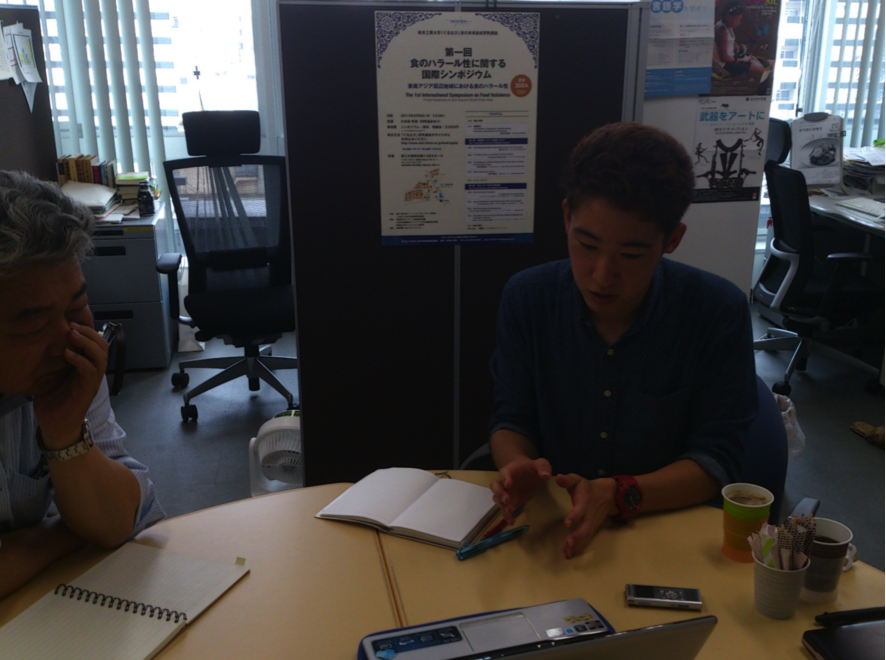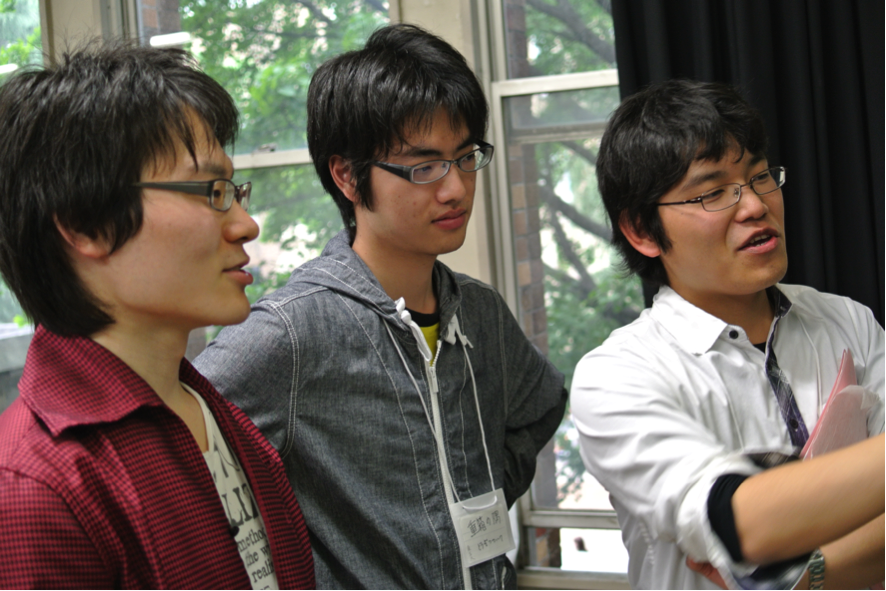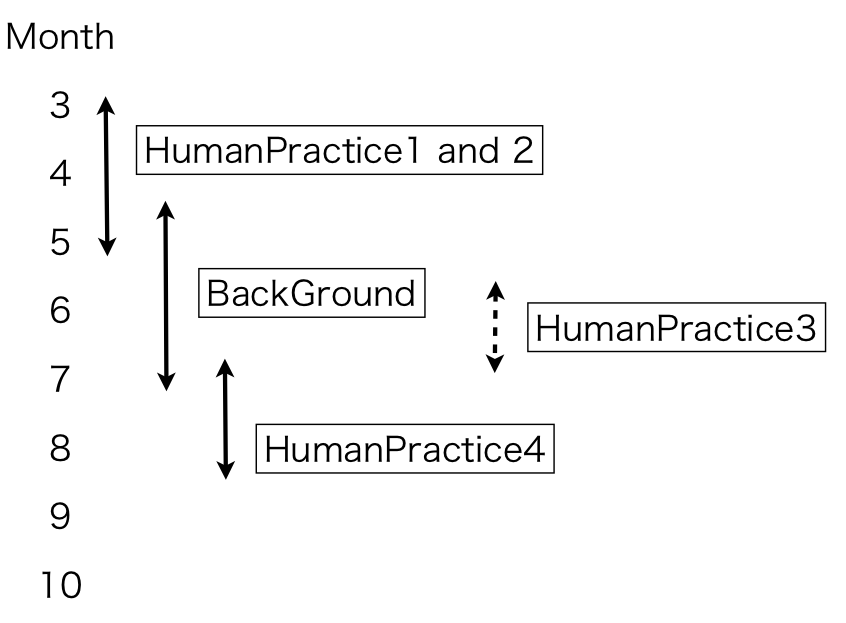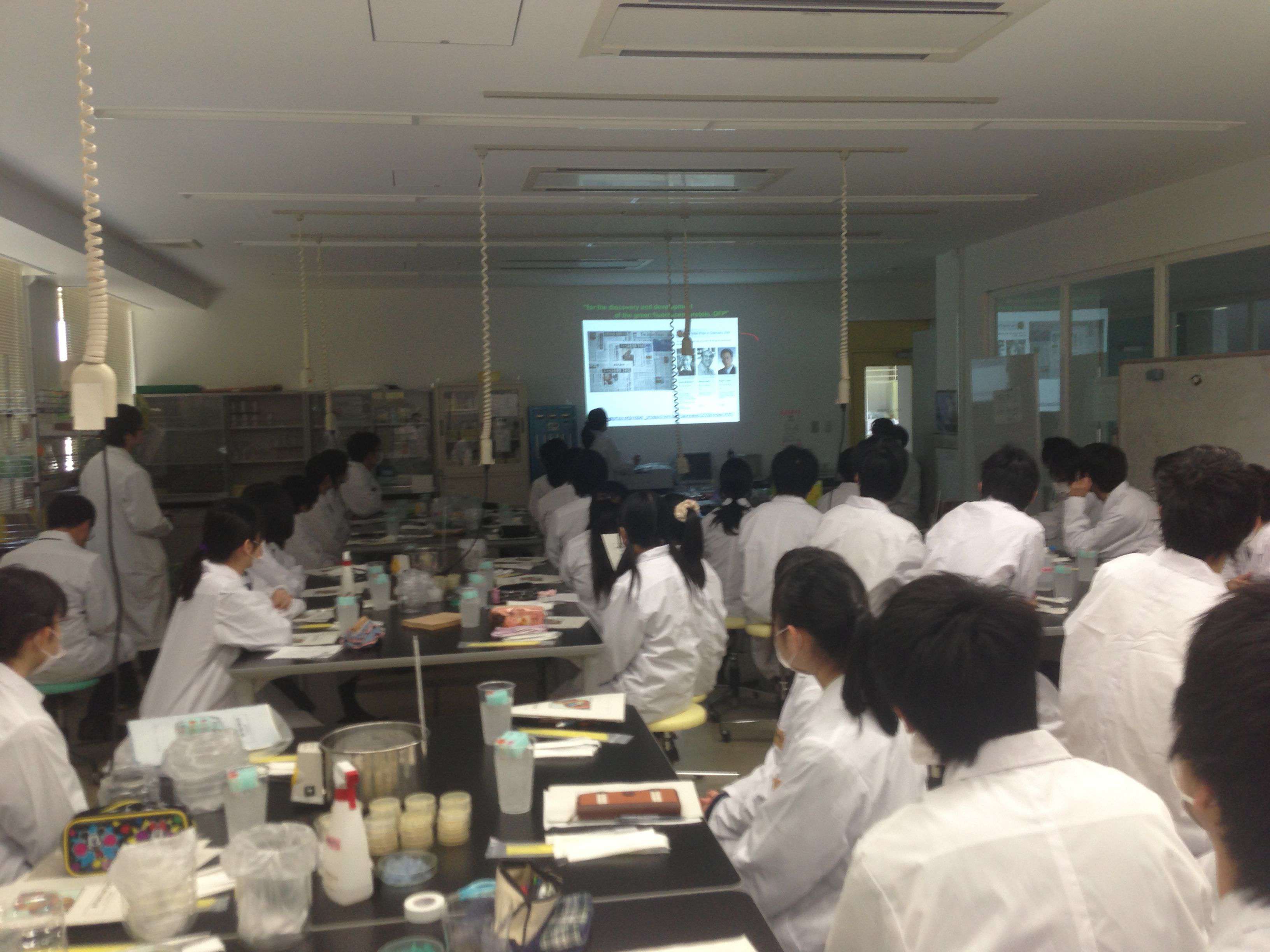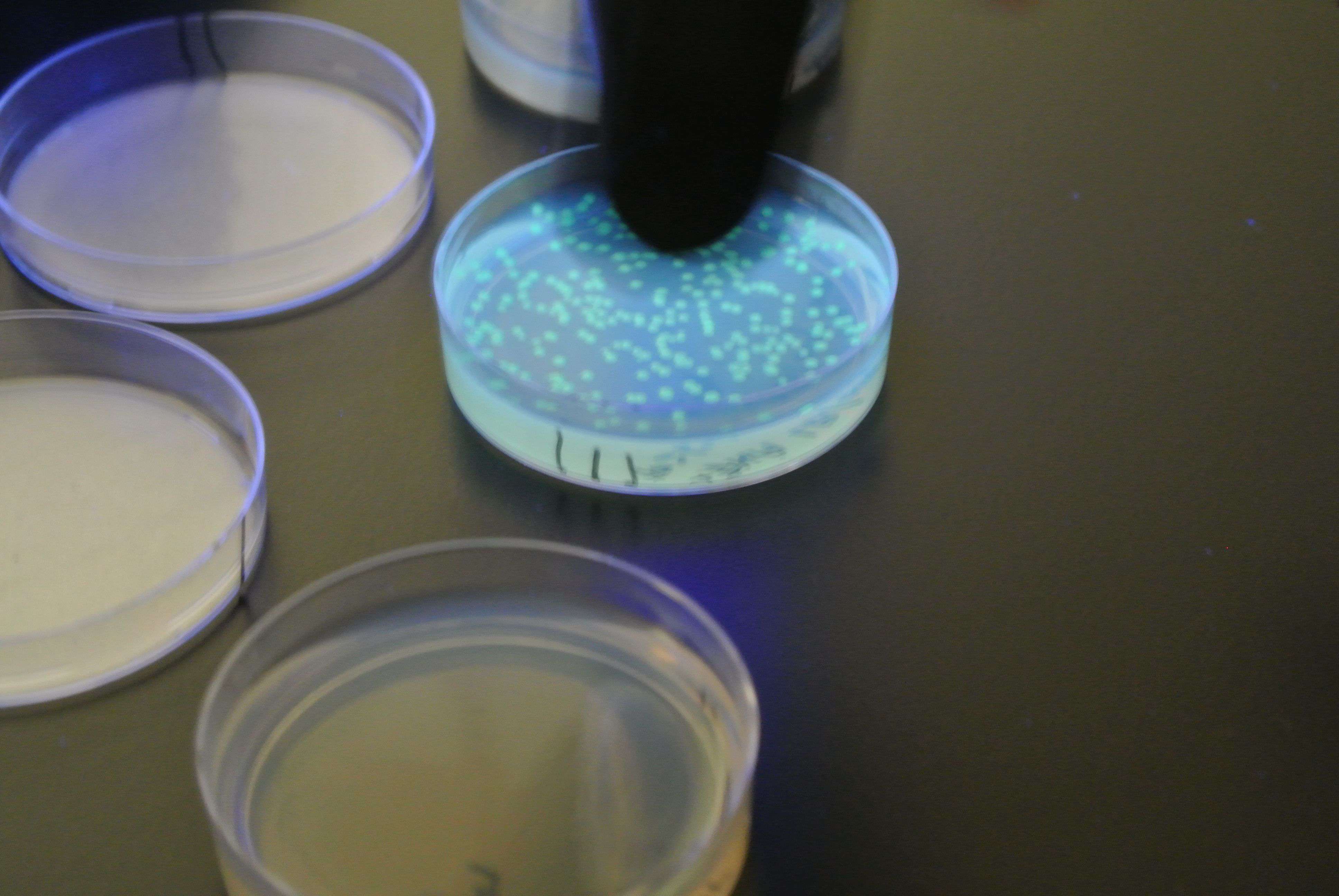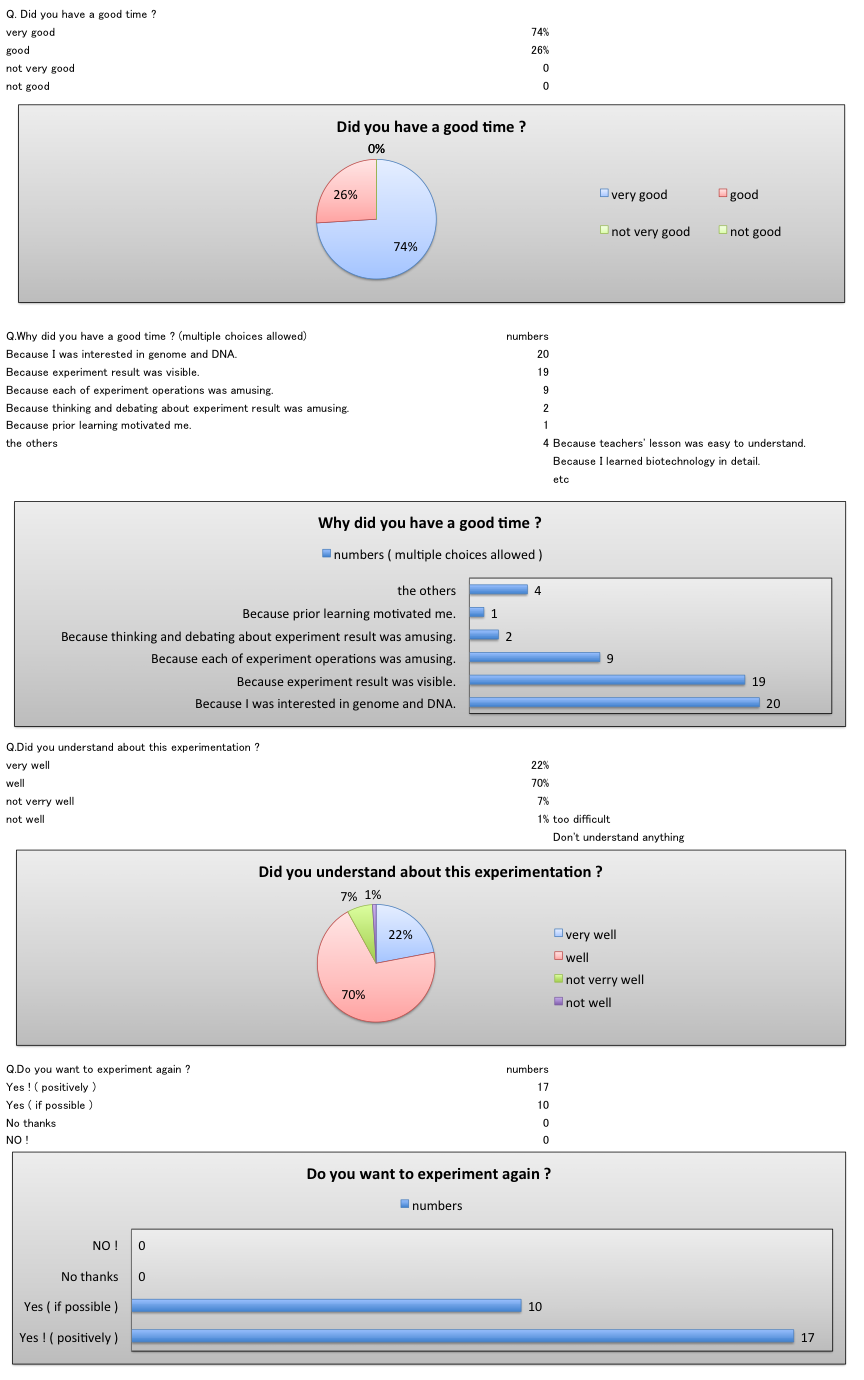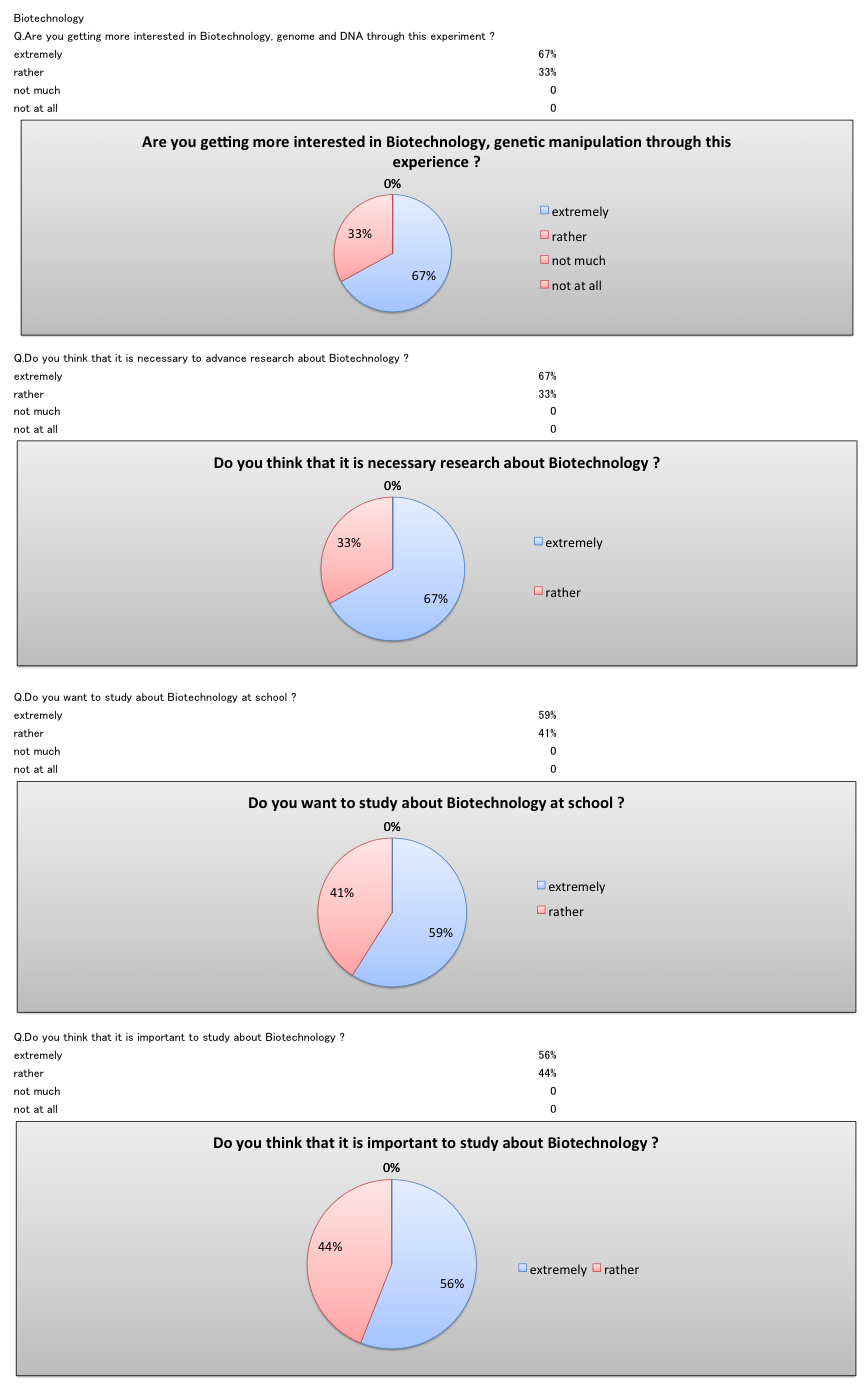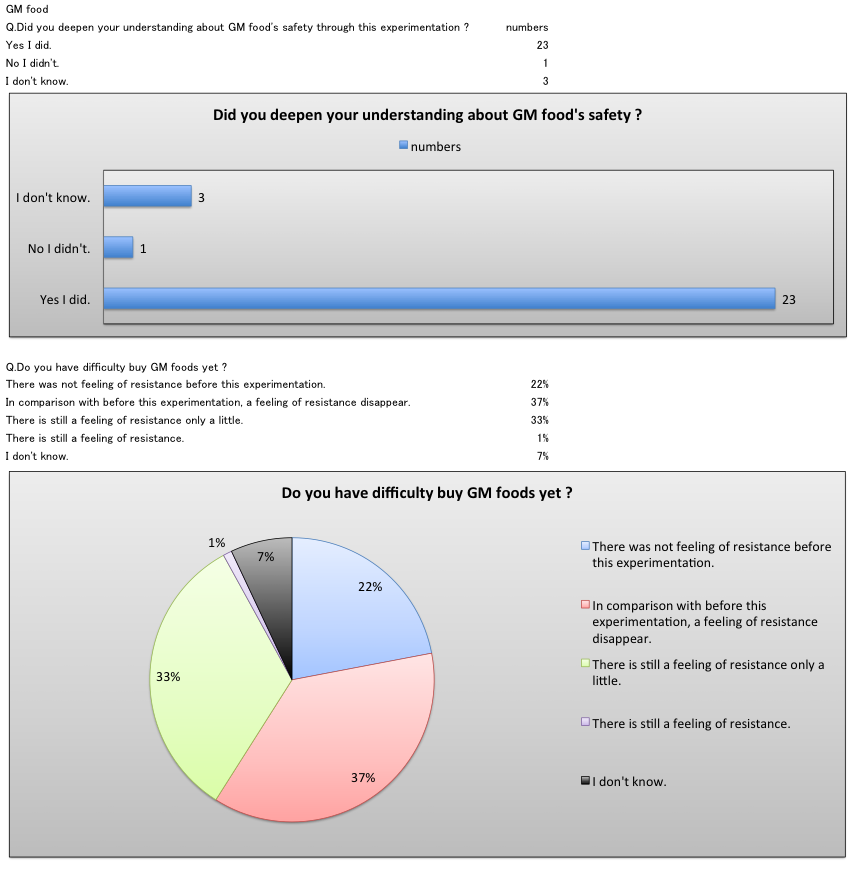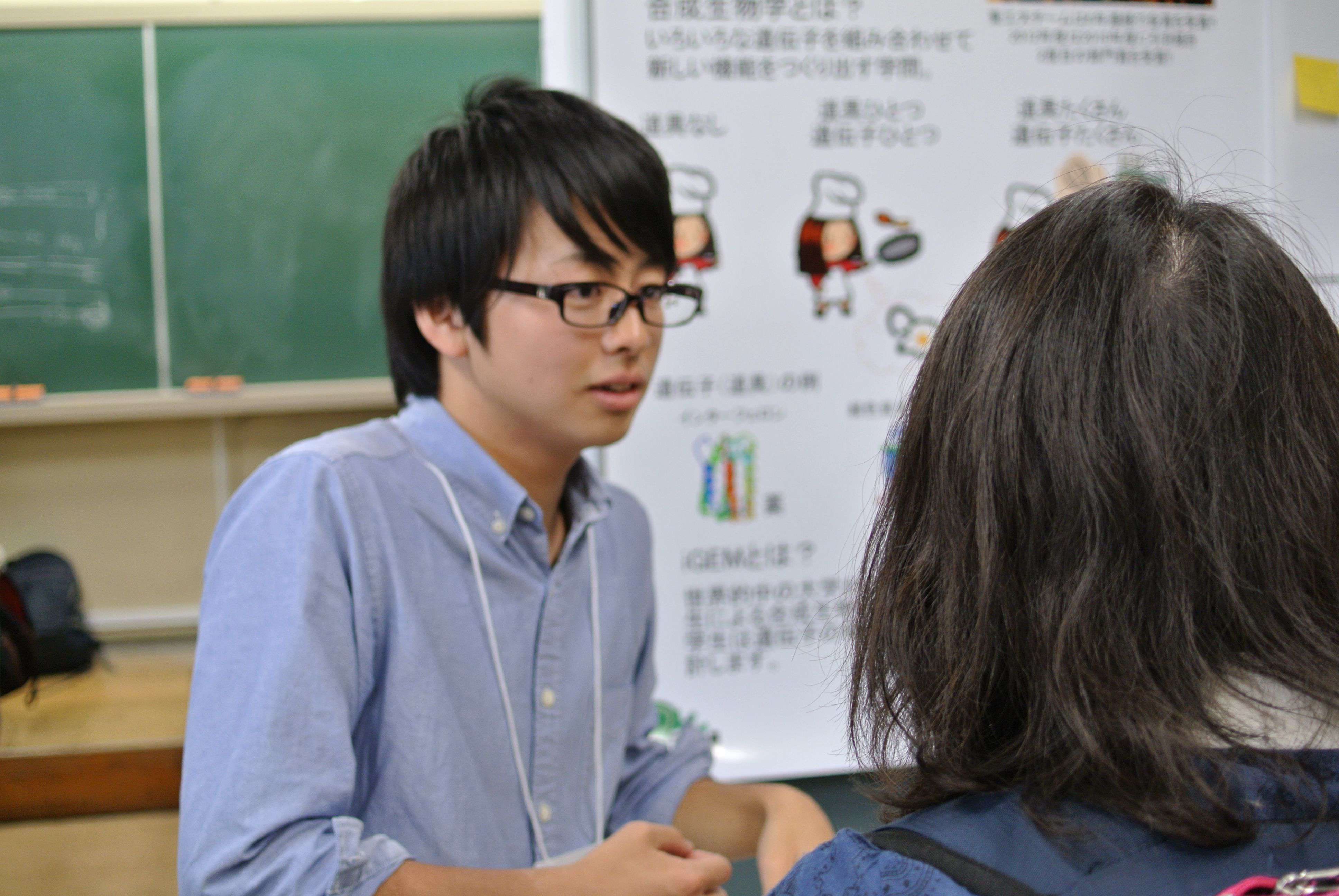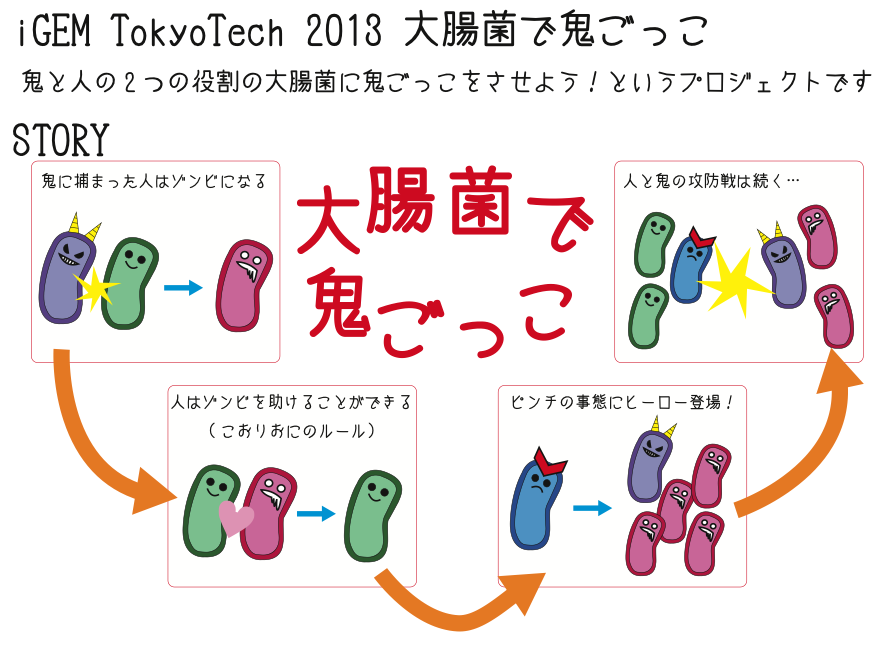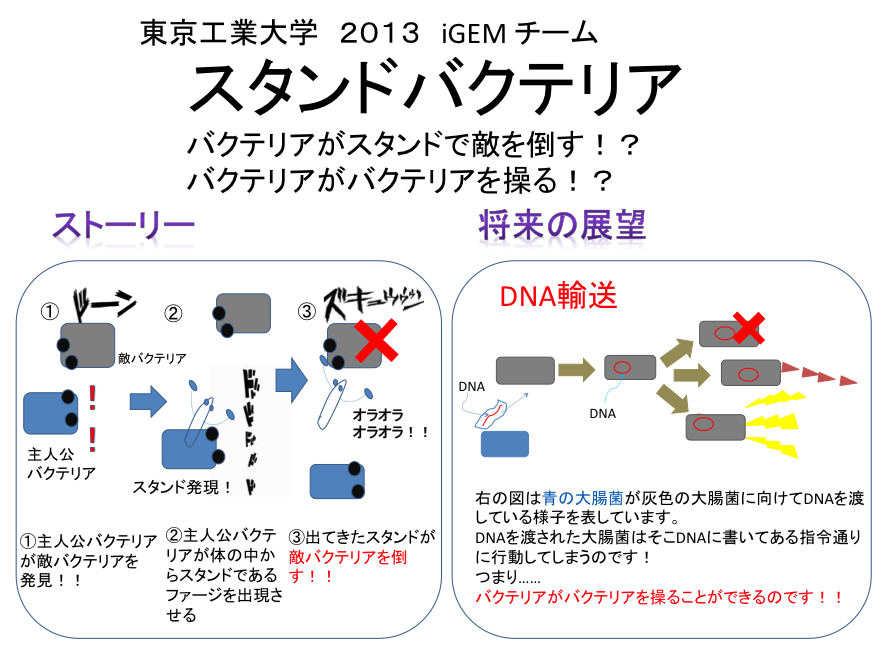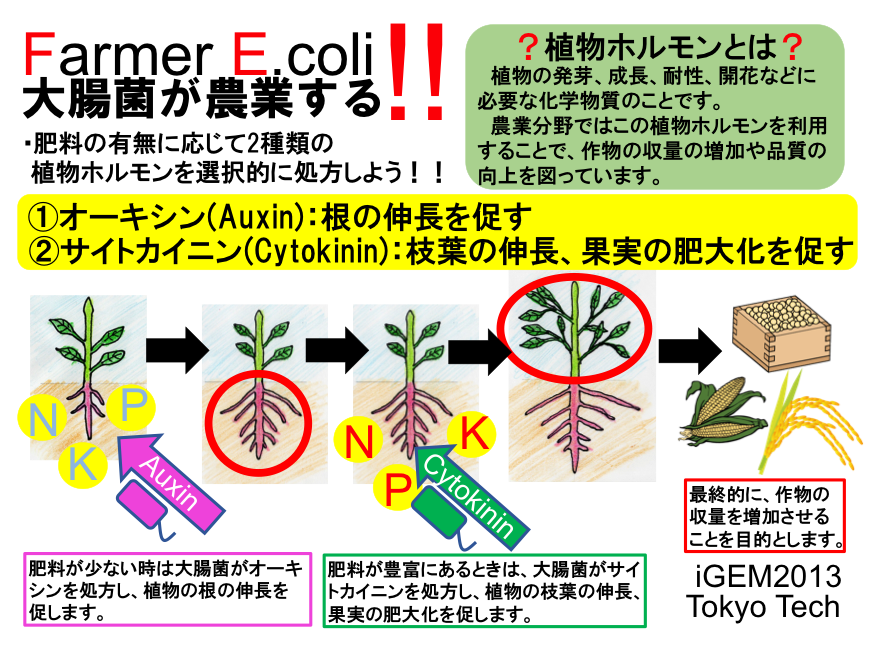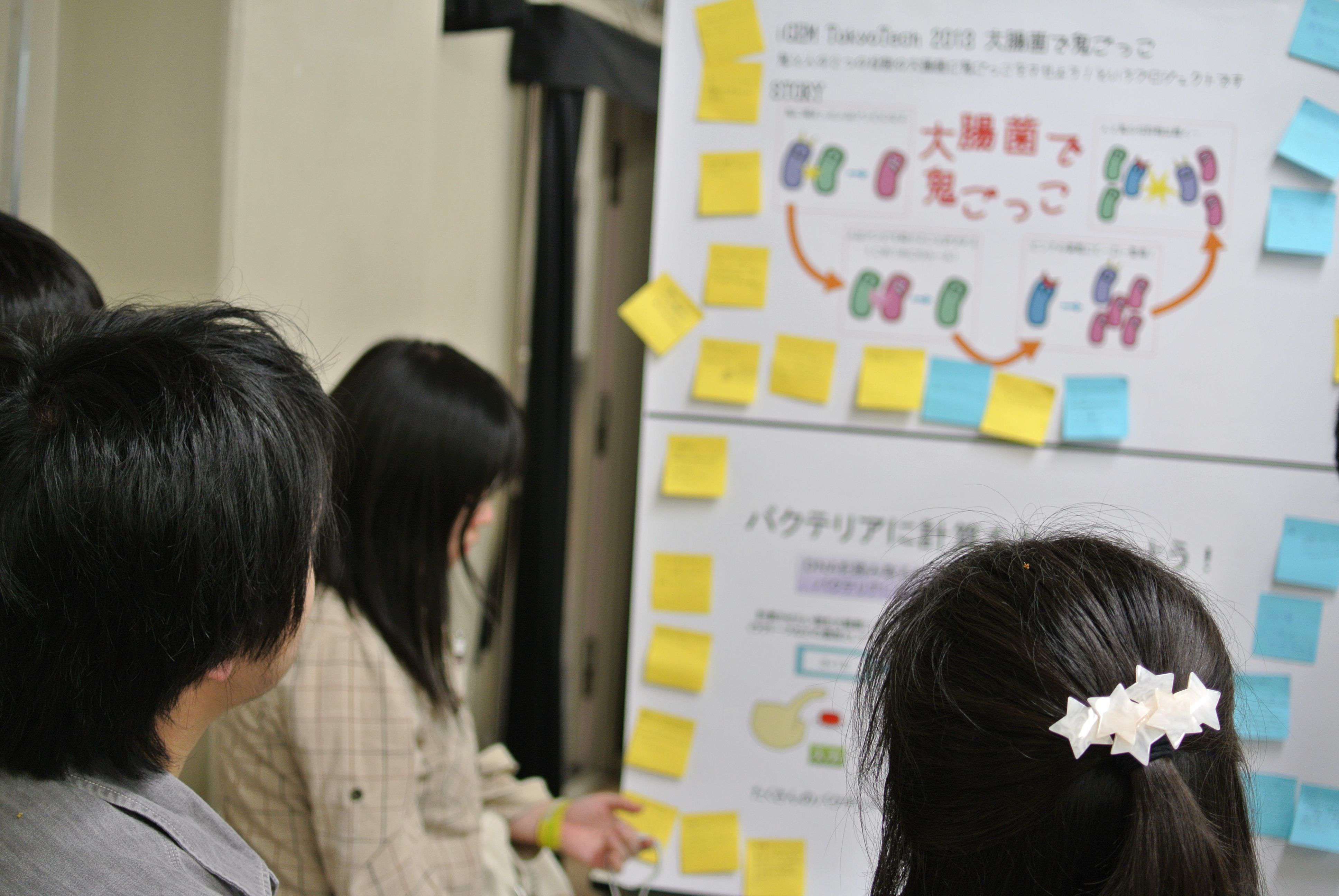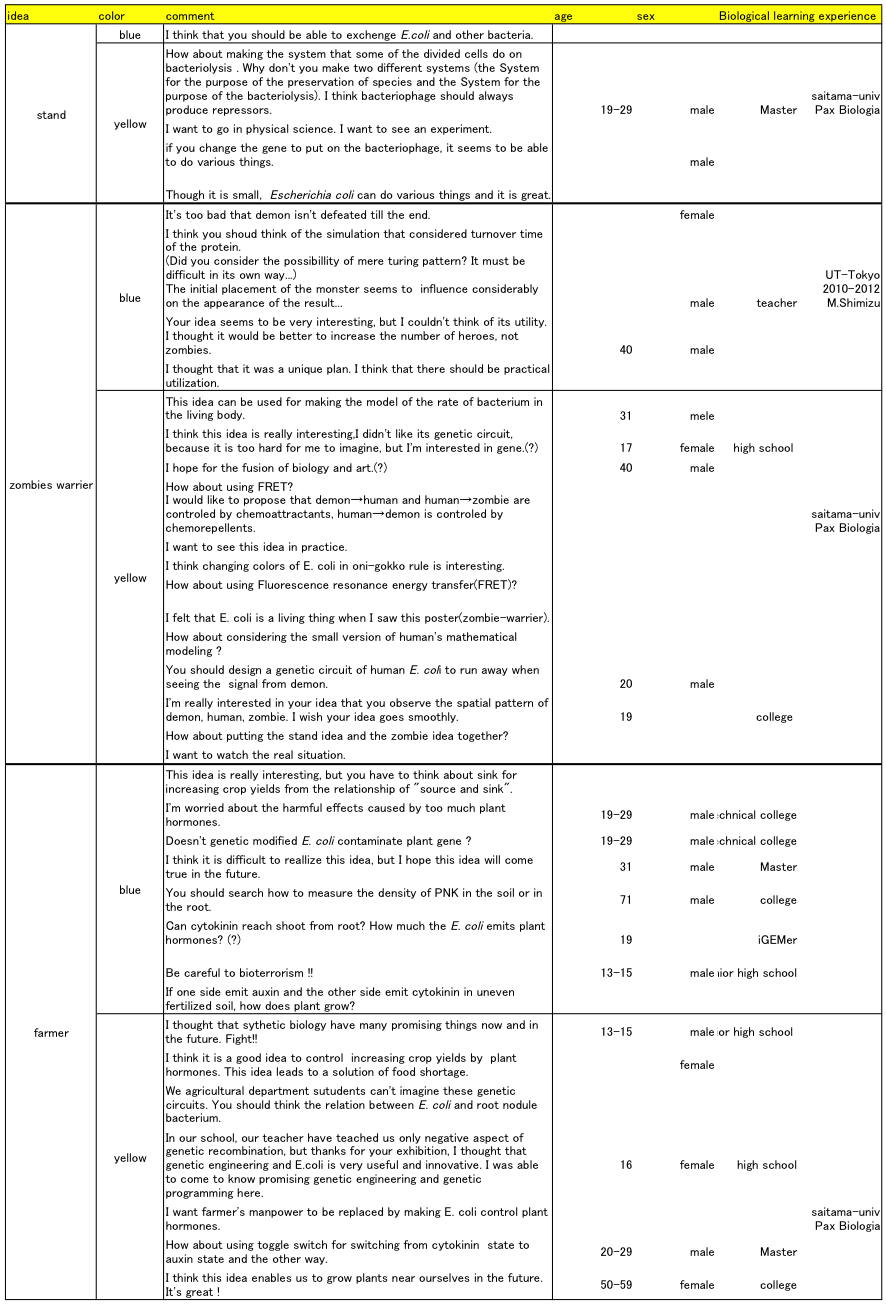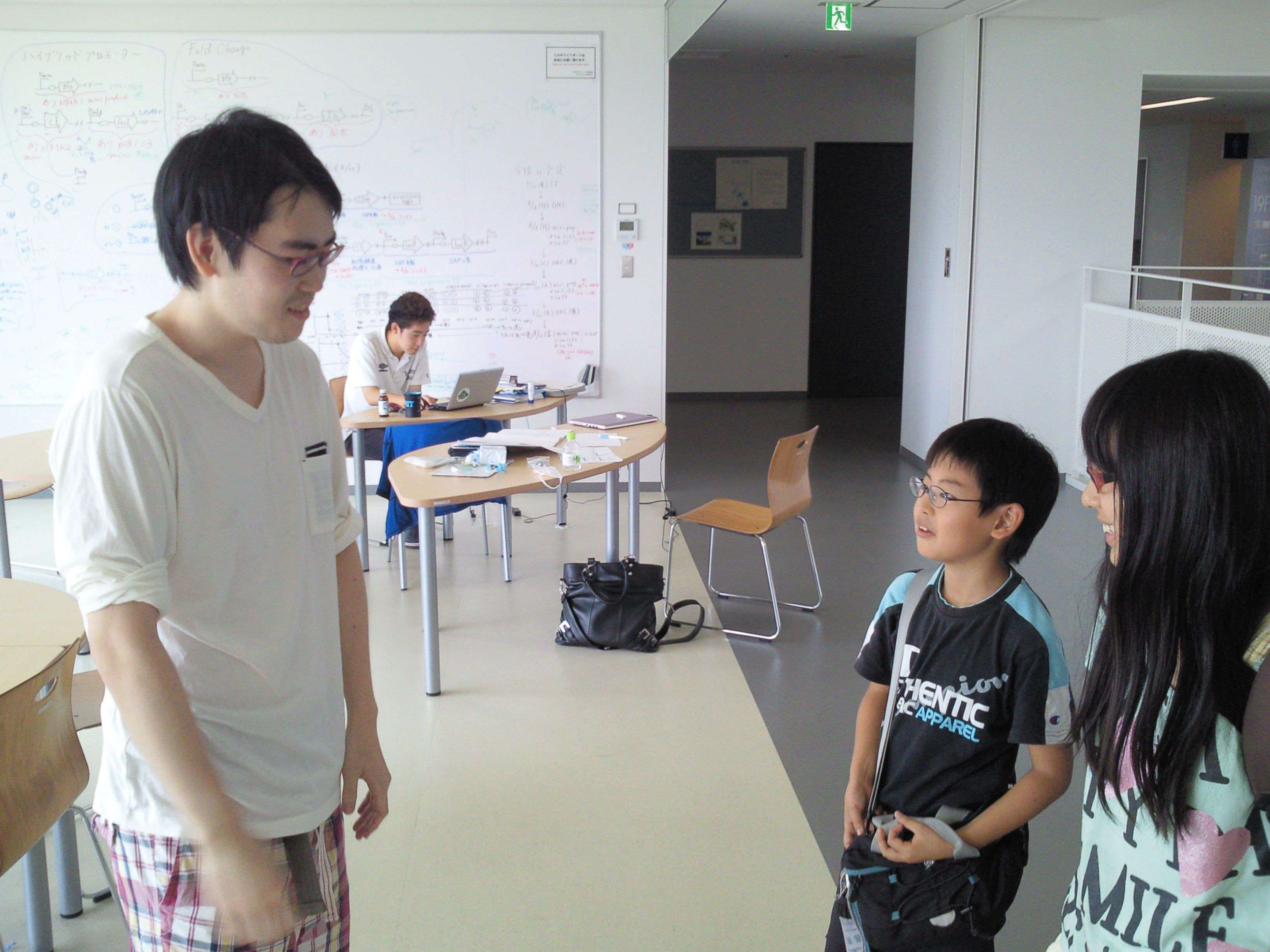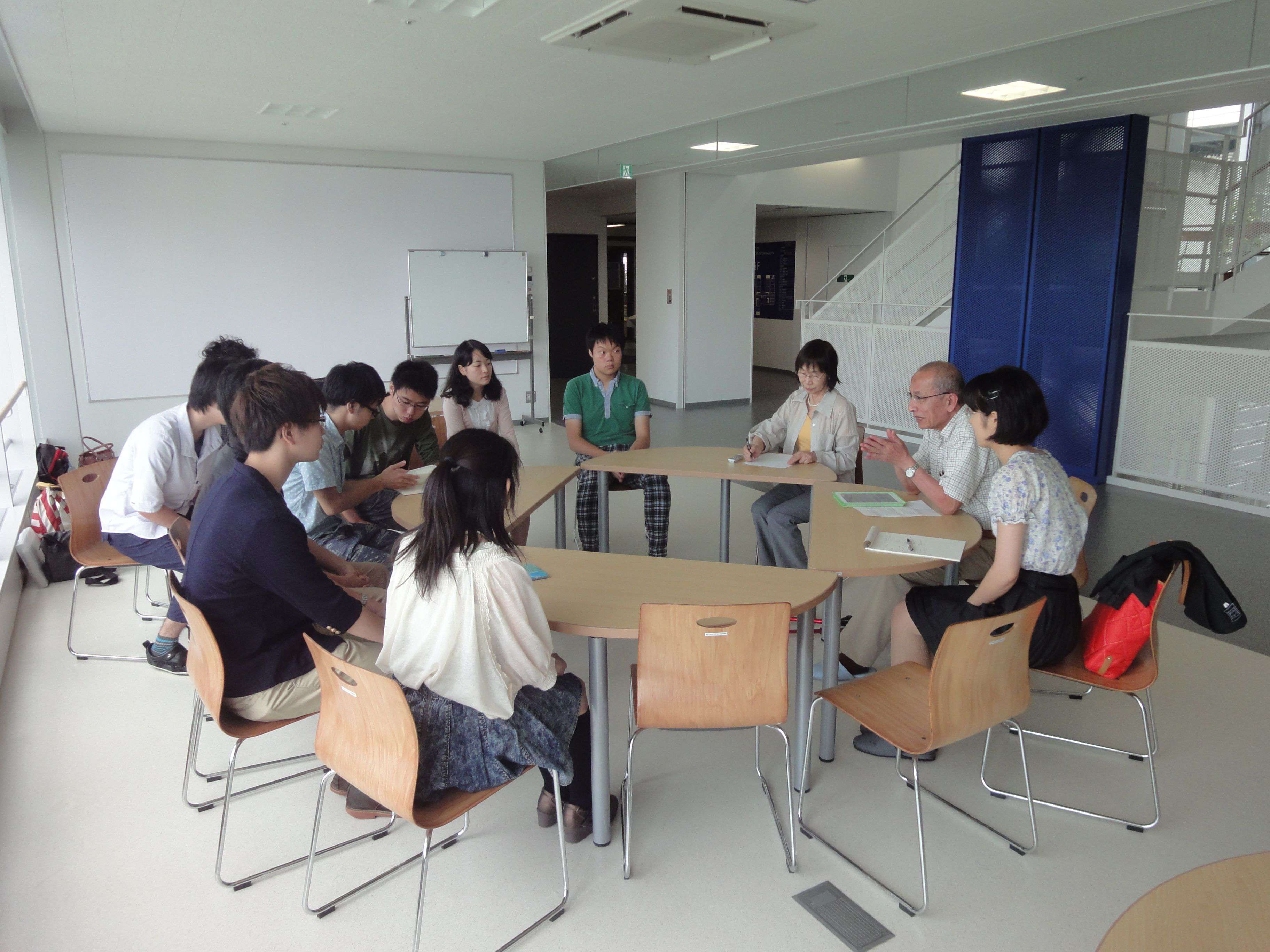Team:Tokyo Tech/Human Practice
From 2013.igem.org
Human Practice
1. Introduction
We hope we contribute to social recognition of synthetic biology. However, once we tell that synthetic biology is one field of genetic engineering, they ask us “What can we do with genetic manipulation? Isn’t it disturbing nature law? What benefits does it bring to us? Doesn’t it harm us? ”.
It is a natural thing for people in general to have these questions. Furthermore, it is understandable that a phenomenon, which looks natural for students majoring one field, does not always look reasonable for ordinary people. As for biotechnology, which handles life, medicine, and food, there are many gaps between what general people focus on and what students studying biology like us focus on. These gaps due to complex of several factors such as health problems, environmental problems, and ethical problems.
Let’s think of the word “Genetic Manipulation ”. What image do general people and students studying biology have on this word? Many biology students use the skill of genetic manipulation for further developments in science after understanding the ethical problem and other weak points. This means they know that the value of the data and life which they can get from genetic manipulation is much bigger than the risk of it. On the other hand, general people have few chances to learn about genetic engineering. In short, they have almost no opportunity to think of the value that can be given from genetic manipulation. Therefore, their image is filled only with doubts as we mentioned first.
Here we show two examples of biological problems in Japan.
The first example is GM food. GM food often gets into the news. In Japan, every food made from grains is required by law to print whether it includes transgenic grain or not. Therefore, consumers can buy food with relief. Many consumers including us learn about genetic manipulation only superficial in school and society. This is why people began to focus on only the downside that many living things which have manipulated genes harm human or the environment. In the end, many people began to refuse GM food without thinking.
The second example is that general people don’t have good impression of E. coli. E. coli is famous for enteric bacteria, and it calls up of dirt. Therefore, most people think E. coli is dirty. In addition, mass media reported food poisoning by O-157 strain a lot few years ago. This made general people have much more hatred of E. coli.
As stated above, Japanese society tends to focus on only the bad side of biotechnology. GM foods actually give us a great benefit, but sadly, ordinary people tend not to know this fact. Under this society, we set our purpose in stages to achieve our goal of spreading synthetic biology.
First, we find out that to what extent the usability of genetic manipulation and E. coli are known in public.
-->Human Practice1 and Human Practice2Second, we reflect the clues that we earned from Human Practice 1 and 2 onto our projects.
-->Back GroundFinally, we brush up our projects.
-->Human Practice4Furthermore, we luckily got a chance to spread synthetic biology to general people directly.
-->Human Practice3
2. Human Practice 1: Experiment Workshop
Some members (Shinya Suzuki, Ken Saito, Emma Hatanaka, Yuta Wakabayashi, Naoki Watarai, Tatsuhiro Isozaki) assisted with this experiment workshop. At the workshop, we tried to transform GFP gene into E. coli with high school students for two days. Also, one of our instructors, Prof. Ohta held a lecture about gene engineering and showed his lab to participants.
Participant students worked very hard on the experiment, and they listened carefully to Prof. Ohta’s lecture. Some students had studied about gene transformation in advance for this workshop. They asked us a lot of questions and took notes.
3. Questionnaire after the workshop
We requested a questionnaire to the participant students. We got answers from 27 students (out of 41 participants).
3-1. Questions about this workshop
Did you enjoy the workshop?
Why do you think that the workshop was fun?
Were you able to understand contents of the experiment we made on this workshop?
Do you want to participate in workshops like this time again?
All students answered that they had a good time at the workshop. Most participants answered that they were interested in biology since before. The second most was that experiment result was visible. They were fascinated by seeing E. coli glow green. Other students answered that the lecture was interesting, or they could learn further than their high school classes.
Owing to teachers’ easy-to-understand lecture and many TA’s assist, most participants were able to understand what they were doing on the experiment, but sadly some said that they couldn’t. They said the lecture was too hard. However, all students answered that they want to try experiments like this again.
3-2. Questions about biotechnology
Did this workshop give you an interest in biotechnology or gene engineering?
Do you feel the importance of biotechnological research?
Do you feel the importance of studying biotechnology?
Do you want to study biotechnology at your school?
Answers showed that participants had strong interest in biotechnology. We are happy that students became more interest in biotechnology through this event.
3-3. Questions about GM food
Did you learn more about GM food’s safety through this workshop?
Do you still have difficulty to buy GM food?
In Japan, it is thought unpleasant to eat GM food. Most participants had some difficulty to buy GM food at least too. However, answers showed that many students thought deeply about GM food and they were able to sweep the bad image away by this workshop.
In the first place before they know synthetic biology, we think that it was a first step to clear the misunderstanding about biotechnology between the public and who study biology like us. The workshop was successful.
4. Human Practice 2: Poster session
at the University of Tokyo
We have participated in iGEM Japan poster session, which was held at the University of Tokyo campus festival, “Gogatsu-sai” on May 19th. Many Japanese iGEM teams gathered at this event and introduced their project to visitors. Visitors were not only who were concerned to iGEM, there were many general people. Our main purpose was to introduce our projects to general people and ask them how they thought about our ideas.
4-1. How we introduced our ideas to the visitors
We made stories to make our projects more familiar and easier to general people.
・Toggle Switch & Crosstalk : Oni-gokko
Oni-gokko is a game Japanese kids play outside. Because every Japanese has experience of playing Oni-gokko, we thought it is a good example to explain the toggle switch system. A human E. coli, a demon E. coli, and a hero E. coli appear in this story. When the human E. coli is caught by a demon E. coli, it turns into zombie E. coli. When the zombie E. coli is rescued by a hero E. coli, it turns back to human E. coli.
・Phage : Jojo
We chose “Jojo’s bizarre adventure”, which is a famous comic in Japan, to introduce our Phage idea. In the comic, a hero handles his guardian angel and defeats many enemies. We made our story tracing this comic. A hero E. coli, an enemy E. coli, and a guardian angel phage appear in this story. When the hero E. coli gets signal from an enemy E. coli, the hero E. coli releases phages and leads the enemy E. coli to bacteriolysis.
・Farmer : Farmer E. coli
We are facing to the global food shortage problem. Researchers all over the world are now thinking how to cope with this. We are also researchers in the bud. We considered how we can solve this problem from a viewpoint of synthetic biology. We thought that if we could raise the yield to the theoretical value, it would be helpful to solve the problem. To realize this, we have to control plant’s growth according to the amount of nutrition in the soil. Therefore, we propose a system that if the amount of nutrition in the soil is enough, encourage plants to synthesize “Auxin”, which make leaves and seeds grow, and if it is not enough, encourage plants to synthesize “Cytokinin”, which make shoots grow to resorb more nutrition. Then how we tell the amount of nutrition to plants? We make “Farmer E. coli”. Farmer E. coli senses the amount of nutrition and emits two accelerating substances to encourage plants to synthesize “Auxin” or “Cytokinin” depending on the situation. If we could consign farming to E. coli, it would also be a significant cost reduction too.
4-2. How we asked questions to visitors
First, we explained what iGEM is and the meaning of synthetic biology, and then we introduced our ideas using posters according to visitors’ knowledge of biology. At the end we asked them for writing their opinions, suggestions, problems, questions on a label and sticking on our posters like the picture. The positive opinions were written on yellow labels, and the negative opinions were written on blue labels.
4-3. Visitors’ reaction
Visitors asked a lot of questions to us. When we say, “We use E. coli to realize our ideas. ”, many asked us “Isn’t it dangerous to handle E. coli? Don’t you get diseases from it? ”. We had to explain the safety of E. coli we use on biological experiments. Furthermore, we had to sweep away the bad image of E. coli and tell the importance of it. What we most cared for telling these things was to attract interest in synthetic biology. Many visitors asked us questions regardless of their age and knowledge, we spent the day with a very rewarding experience. We also got many stimulating opinions.
4-4. How we used the opinions we have got from visitors
We read all of the incentive opinions, and took them into our projects. Some problems were pointed out by these opinions, so we tried to get over them.
5. Back Ground
From Human Practice 1 and 2
- We confirmed that most general people have a negative image of genetic manipulation and E. coli in the first place before they know synthetic biology. However, most general people faced our ideas of synthetic biology earnestly. To incorporate plots which tell a story with our ideas is important for helping general people know well about synthetic biology.
- We thought of a solution for the food shortage from a viewpoint of synthetic biology as a theme for helping general people understand easily genetic programming.
Synthetic biology is similar to existing genetic modification technology from the perspective that we modify microorganisms using useful genes. However, synthetic biology is more advanced than existing genetic modification technology from the perspective that we program the relationships among genes on the basis of mathematical-model. We wanted to transmit the advanced point to society as well as enjoy ourselves through iGEM.
When we start up this project, from Human Practice1 and 2, we confirmed that most general people have an unilateral negative image of genetic manipulation and E. coli by contact with various general people through a workshop and a poster session. For example, when we explained to general people that E. coli is used in an experiment for our ideas, they said to us " Is E. coli a unsafe germ? Is your body health? ". When we explained to them about genetic manipulation, they said to us " Genetic manipulation is not such a difficult operation. Easily making the individual that cannot be in the world formerly make me feel slightly terrible. ".
However even people who have negative image of genetic manipulation faced our ideas of synthetic biology earnestly. They also questioned and argued us many times. When the argument was finished, we asked them a question. They said to us with a smile "Well, I haven't known that E. coli and genetic manipulation are helpful to the development of science! Today, I'm glad to hear that interesting story about progressive synthetic biology! ".
Our ideas attracted them. We augured with them about our ideas. Through these experiences, we got clues that our project can be recognized by society.
As stated above, the goal of our project is "We solve a general negative image of genetic manipulation and E. coli based upon synthetic biology. ", that is, "We solve a general negative image of genetic manipulation using microorganisms in biotechnology. ". To achieve the Goal, we must reflect knowledge from Human Practice1 and 2 on our project as much as possible.
Things from Human Practice1 and 2 reflected onto our project- (1) Contain plots to help general people understand
- (2) Contain contents that attract most people
- (3) Appeal technology of synthetic biology
By adding (1)~(3) to our project, we aimed to achieve the goal. In (1), when we selected stories, we set conditions that contents are famous all over the world and suggestive of Japan. We had many ideas. However, we finally selected "Ninja ". This is because we did not find other ideas to meet (2) and (3). There is something fascinating about ecology of ninja. By expressing ecology of ninja by E. coli, our project can attract many people. When we succeed in expressing ecology of ninja in genetic circuits, our project will help general people understand programming of genetic network in synthetic biology.
However, even if we use project "Ninja ", programming of genetic network doesn't fit to appeal synthetic biological technology that is easily recognized by many people. Therefore, we started up another project "Farming " for making practicable. In this project, we aim to improve efficient agriculture for coming food shortage.
By making E. coli control plant hormone, regardless of uneven fertilized soil, we can improve drastically yield. Furthermore, making E. coli farmer reduce manpower. We implement low-cost and efficient agriculture.
Project "Ninja" and project "Farming" are greatly promising.
6. Human Practice 3: Interviewed
by Takeda-keisoku-sentan-chi foundation.
This June, we (iGEM2012 tokyo tech leader Mr. Nakayama and iGEM2013 tokyo tech 7 members) were interviewed by Takeda-keisoku-sentan-chi foundation briefly. This foundation holds a symposium with various researchers on the basis of a big theme every year. Additionally, they publish a summary of the symposium. For example, in the symposium on the basis of "Fluctuation", Distant-controlling "Hayabusa" asteroid probe that returned from the universe June 2010, the origin of the universe and a system of biology are discussed from a viewpoint of "Fluctuation".
A symposium was held about regenerative medicine, experimental physics and synthetic biology on the basis of "Making" this year. In synthetic biology, the symposium proceeded with Prof. Kiga. Upon publishing a summary of this symposium, they hoped to make an article that is easy for general people who don't know synthetic biology to read. They wanted to refer to thought of us who are beginners of synthetic biology. Thereby, we were interviewed by Takeda-keisoku-sentan-shi foundation.
6-1. Q.What did you achieve through iGEM?
Mr. Nakayama
iGEM made a change in my study field. Though I thought to study organic chemistry field originally, iGEM changed my view towards biology. Previously I had an image that all results of biology are not clear. However, I saw cell-cell communication operate genetic program with my own eyes, that is, I found out genetic system has "on" state and "off" state. I became interested in genetic programming. Though we used prokaryote in iGEM, I use eukaryote now. I’m studying the cure of cancer on genetic level.
6-2. Q.What are good points of your team?
Mr. Nakayama
Team Tokyo tech is different from others in Japan. We dare not to allot a part clearly. All member can experiment. All member shares project. All member can fill in lacked someone.
6-3. Q.How do you manage your project?
Shinya Suzuki
We hold meeting at 18:00 on Monday. The meeting is finished at 21:00 at the earliest. The meeting is finished before last train at the latest. Because team Tokyo tech is not a club, we don't have a fixed place to work. However, our teachers lend us a room for a rest.
6-4. Q.As beginner of synthetic biology, why do you participate
in this competition?
Shunta Suzuki
Though I'm a junior in Tokyo Tech, I am different from other members. This year I entered here on the process of transfer admission. I was a technical junior college student until last year. I did a graduation research last year. A junior in this college cannot do researches (like graduation researches) here. Because I worked hard for a year, it doesn't satisfy me to pass for this year as just a college student. I wanted to hold research mind. When I thought like this, I knew iGEM.
Sairi Tomatsu
When I was a freshman, I took Prof. Kiga's biology lecture twice. I was interested in Prof. Kiga's research contents and the iGEM contest.
Shi Hengyu
I took part in this iGEM contest as a overseas student. Last year and also the year before last, in this college, overseas students took part in iGEM. After my senior, as a representative of overseas students in Titech, I want to challenge world students to compete. Living in Japan, I should know Japanese mind. I want to feel teamwork with Japanese by experiencing various things with my team members. I also want to achieve something what is cool in college.
When the summary of the symposium on the basis of "Making" is published, column about this interview will be added to the book on two or more pages. We hope this book will be read by many people and help them know well about progressive synthetic biology and iGEM.
7. Human Practice 4: Young Takeda Awards
Even if we use "Ninja" as our project, it is still difficult for general people to comprehend programming of genetic network in synthetic biology. Accordingly, we decided to add improving efficiency of agriculture to our project as an approach on practical use side. This series of thinking was enough to motivate us. However, we eventually wanted our project to become capable of practical application. Therefore, we had to brush up our project to be received in society.
Thereby, we set two goals beyond about another project "Farming".
We have to tell that our project is worthwhile for society. We have to learn defects of our project. We decided to contribute a paper about our project "Farming" to Young Takeda Awards to achieve above two goals.
8. Acknowledgment
To write this report, we got great information.
We really thank to
Prof. Hiroyuki Ohta
Prof. Daisuke Kiga
And, all people who participated in our human practices.
To write this report, we got great information.
We really thank to
Prof. Hiroyuki Ohta
Prof. Daisuke Kiga
And, all people who participated in our human practices.
 "
"


